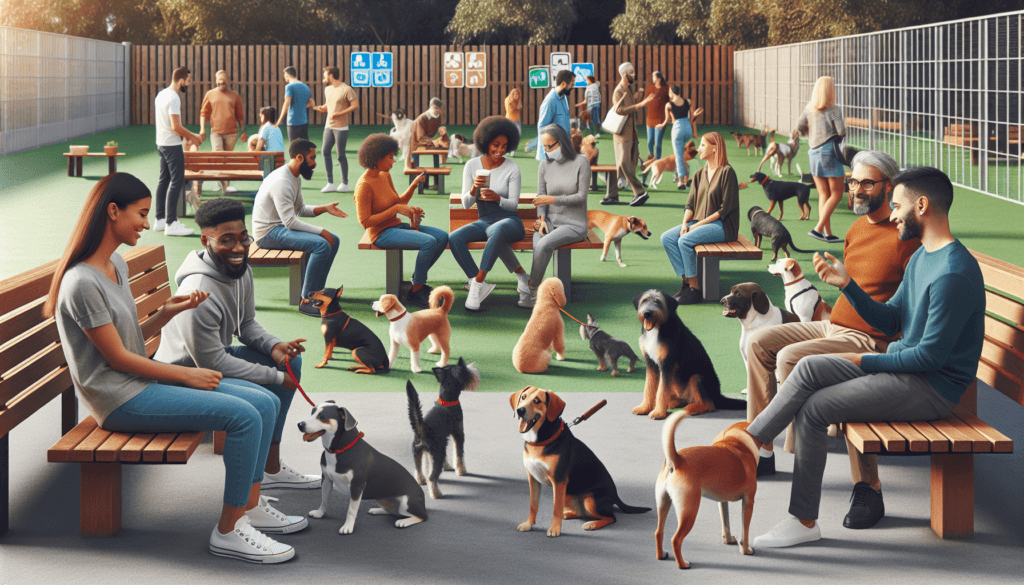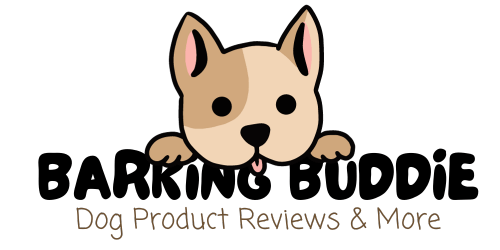If you’re a dog lover who enjoys spending time with your furry friends at the local dog park or participating in dog-related events, you know the importance of fostering a welcoming environment in your dog community. Dogs are social creatures who thrive when they feel safe, comfortable, and included. By creating a space that is open, friendly, and accepting, you can enhance the experience for both dogs and their owners, encouraging strong connections and a sense of belonging within your dog community. In this article, we will explore some simple yet effective ways to create a warm and inviting environment that promotes a sense of unity and friendship among all dog enthusiasts.

Understanding the Importance of a Welcoming Dog Community
Creating a Sense of Belonging
In a dog community, creating a sense of belonging is crucial to foster a positive and supportive environment. When dog owners feel like they belong, they are more likely to engage and participate actively in the community. By organizing regular meetups and social events, dog owners can come together, bond, and build lasting friendships. These gatherings provide a platform for dog owners to share their experiences, seek advice, and celebrate the joys of having a furry friend. When everyone feels included and accepted, the sense of belonging strengthens, and the dog community thrives.
Promoting Positive Interactions
Positive interactions among dog owners not only strengthen the bond between individuals but also contribute to the overall well-being of the dogs. Encouraging friendly and respectful communication is essential to create a welcoming atmosphere. By promoting a culture of kindness and empathetic behavior, dog owners can engage in meaningful conversations, exchange ideas, and share their knowledge for the benefit of all. Positive interactions also help foster a supportive network, wherein individuals can lean on each other for support, guidance, and even dog-related emergencies.
Ensuring Safety and Security
Safety and security are vital components of a welcoming dog community. Establishing clear rules and guidelines is imperative to ensure the well-being of both dogs and their owners. Setting basic etiquette standards, such as requiring dogs to be on leash in common areas, cleaning up after them, and discouraging aggressive behavior, helps maintain a safe environment for everyone. Implementing effective leash policies also reduces the risk of dog altercations and promotes a sense of security within the community. By maintaining a safe and secure environment, dog owners can enjoy their time together without worry or fear.
Building Positive Relationships among Dog Owners
Organizing Meetups and Social Events
To build positive relationships among dog owners, organizing regular meetups and social events is key. These gatherings provide an opportunity for dog owners to connect with one another, share insights, and form friendships. From casual park gatherings to themed events like dog costume parties or dog-friendly hikes, there are numerous ways to engage the community. By facilitating these meetups and social events, dog owners not only strengthen their relationships but also enhance the overall sense of belonging within the dog community.
Encouraging Communication and Collaboration
Encouraging open and inclusive communication is crucial for building positive relationships among dog owners. By fostering an environment where ideas and opinions are respected and valued, individuals feel comfortable sharing their thoughts and experiences. Promoting collaboration among dog owners, such as organizing group walks or partnering for training sessions, can also lead to stronger bonds. By promoting communication and collaboration, a supportive network is created, enabling dog owners to lend each other a helping hand, exchange advice, and navigate the joys and challenges of dog ownership together.
Fostering a Supportive Network
Building a supportive network is essential in a dog community. By creating opportunities for dog owners to support one another, a powerful network of individuals who share a common love for dogs is established. This network can prove invaluable during times of need, whether it’s finding a dog sitter, seeking advice on dog behavior, or simply having a friendly ear to listen. By fostering a supportive network, individuals feel a sense of security, knowing that they can count on their fellow dog owners for guidance, assistance, and friendship.

Establishing Clear Rules and Guidelines
Setting Basic Etiquette Standards
Establishing clear rules and guidelines regarding basic etiquette is vital in a dog community. This ensures that all members understand the expectations for behavior and can coexist harmoniously. Important etiquette standards include cleaning up after dogs, keeping them on a leash in common areas, and respecting the space and boundaries of others. By setting these standards, a respectful and considerate environment is created where every dog owner feels comfortable and safe.
Addressing Aggressive Behavior
Addressing aggressive behavior is crucial to maintaining a safe and welcoming dog community. It is essential to educate dog owners about recognizing and addressing aggression in their dogs. Offering resources such as behavior training classes and workshops can help individuals learn effective techniques for managing and addressing aggressive behavior. By addressing this issue head-on, the community can work together to ensure that all dogs feel safe and comfortable in their surroundings.
Implementing Effective Leash Policies
Implementing effective leash policies is essential for the safety and security of both dogs and their owners. By requiring dogs to be on leash in common areas, the risk of confrontations or accidents can be significantly reduced. Clearly communicating and enforcing these policies helps create a sense of order and ensures that everyone can enjoy their time together without worry or fear. By implementing effective leash policies, dog owners can have peace of mind, knowing that their dogs are safe and secure.
Providing Education and Resources
Offering Training Classes and Workshops
Providing education and resources to dog owners is key to building a knowledgeable and responsible community. Offering training classes and workshops not only helps improve the behavior and obedience of dogs but also equips owners with the tools and knowledge they need to be responsible pet parents. By partnering with professional trainers and behaviorists, the dog community can provide valuable resources to its members, empowering them to better understand and care for their furry companions.
Sharing Health and Wellness Information
Sharing health and wellness information is essential for promoting the well-being of dogs within the community. By providing resources on topics such as proper nutrition, exercise routines, and preventive care, dog owners can ensure that their pets lead happy and healthy lives. Sharing information on common health issues and providing access to relevant veterinary services can also help dog owners address any concerns or potential issues early on. By prioritizing the health and wellness of dogs, the community can create a supportive environment that nurtures the overall well-being of its canine members.
Sharing Resources on Responsible Dog Ownership
Promoting responsible dog ownership is vital in a welcoming dog community. By sharing resources on responsible ownership, such as information on licensing, microchipping, and regular vaccinations, dog owners are encouraged to prioritize the welfare and safety of their pets. Providing information on local animal shelters, rescue organizations, and adoption resources also helps promote responsible ownership within the community. By sharing these resources, the dog community supports and advocates for the well-being of all dogs, regardless of their backgrounds or circumstances.

Creating Inclusive Spaces for All Dogs
Welcoming Dogs of All Breeds and Sizes
Creating inclusive spaces for all dogs is essential in a welcoming dog community. By welcoming dogs of all breeds and sizes, individuals can come together to celebrate the diversity and uniqueness of each furry friend. Celebrating and embracing different breeds promotes a culture of acceptance and discourages discrimination within the community. By fostering inclusivity, the dog community becomes a vibrant and diverse space where every dog is valued and appreciated.
Accommodating Dogs with Special Needs
It is important to accommodate dogs with special needs within the dog community. By recognizing and understanding the unique requirements of dogs with disabilities or health conditions, the community can adapt spaces and activities to ensure their inclusion. Providing accessible areas where dogs with mobility issues can comfortably navigate and organizing events that consider the needs of all dogs help create a truly inclusive environment. By accommodating dogs with special needs, the dog community demonstrates compassion and empathy, reinforcing the values of acceptance and understanding.
Promoting Dog-Friendly Policies in Public Spaces
Promoting dog-friendly policies in public spaces is crucial to creating an inclusive dog community. By advocating for policies that allow dogs in parks, beaches, and other public areas, dog owners can enjoy quality time with their pets in shared spaces. Collaborating with local authorities, municipalities, and business owners to create designated dog-friendly areas benefits not only the dog owners but also the community as a whole. By promoting dog-friendly policies, the dog community gains recognition and support, fostering a culture where dogs are embraced as valued members of society.
Encouraging Responsible Behavior
Promoting Consistent Vaccination and Health Checks
Encouraging responsible behavior includes promoting consistent vaccination and regular health checks for dogs. By educating owners about the importance of vaccinations and routine veterinary care, the community ensures the well-being of all dogs. Providing information on local veterinary clinics, vaccination schedules, and preventive healthcare measures helps dog owners stay proactive about their pet’s health. By promoting responsible behavior, the dog community can significantly reduce the risk of preventable diseases and improve the overall health of its canine members.
Addressing Waste Management
Addressing waste management is crucial to maintaining a clean and hygienic dog community. By setting clear expectations for dog owners to clean up after their pets, the community can ensure that public areas remain clean and safe for everyone. Providing waste disposal stations and educating dog owners about proper disposal methods are essential steps in addressing this issue. By consistently addressing waste management, the dog community demonstrates its commitment to responsible behavior and fosters a cleaner and healthier environment for all.
Encouraging Responsible Leash Use
Promoting responsible leash use is fundamental to ensuring the safety and well-being of dogs in the community. By educating dog owners about the importance of keeping their dogs on leash in public spaces, potential risks and conflicts can be minimized. Encouraging responsible leash use not only protects dogs from potential dangers but also respects the comfort and boundaries of other community members. By promoting responsible behavior, the dog community creates a harmonious environment where everyone feels secure and at ease.

Facilitating Positive Interactions among Dogs
Providing Adequate Space for Safe Play
Facilitating positive interactions among dogs requires providing them with adequate space for safe play. By designating areas where dogs can run, explore, and interact off-leash, the community encourages socialization and exercise. These spaces should be maintained and regularly inspected for potential hazards to ensure the safety of all dogs. By facilitating safe play, the dog community promotes happy and healthy interactions that strengthen the bonds between dogs and their owners.
Organizing Training Sessions for Socialization
Organizing training sessions specifically focused on socialization is beneficial for both dogs and their owners. These sessions provide a controlled environment where dogs can learn to interact with their canine counterparts while receiving guidance and supervision from experts. By participating in these training sessions, dog owners gain insight into their dog’s behavior and learn effective strategies for successful socialization. By facilitating positive interactions, the dog community contributes to the overall well-being and development of dogs.
Introducing Dogs Slowly and Gradually
Introducing dogs to one another should be done slowly and gradually to ensure a positive experience for both dogs and their owners. By organizing controlled introductions and providing guidance, the community can help mitigate potential conflicts or anxieties. Encouraging dog owners to observe and respect each dog’s body language and stress signals helps prevent unnecessary stress or aggression. By promoting gradual introductions, the dog community fosters a safe and welcoming environment where dogs can interact and form positive relationships.
Promoting a Welcoming and Inclusive Culture
Celebrating Diversity within the Dog Community
Promoting a welcoming and inclusive culture requires celebrating the diversity within the dog community. Each dog is unique and brings their own personality, traits, and needs to the community. By appreciating and valuing this diversity, the dog community cultivates an environment that is welcoming to all types of dogs and owners. Celebrating different breeds, mixed breeds, and rescue dogs not only fosters acceptance but also encourages others to embrace the individuality and diversity of each dog.
Discouraging Discrimination and Judgment
Discouraging discrimination and judgment is vital in creating a welcoming and inclusive dog community. It is essential to foster an environment where all dogs and their owners are treated with respect and acceptance, regardless of their appearance, breed, or background. By promoting an atmosphere free from judgment, individuals can feel comfortable being themselves and sharing their experiences without fear of criticism. By discouraging discrimination and judgment, the dog community establishes a culture of inclusivity and compassion.
Encouraging Kindness and Empathy
Encouraging kindness and empathy is foundational to creating a welcoming and inclusive dog community. By fostering a culture of compassion and understanding, individuals can support and uplift one another. Acts of kindness, such as offering assistance to a struggling dog owner or providing words of encouragement, can go a long way in creating a positive and supportive environment. By encouraging kindness and empathy, the dog community strengthens its bonds and cultivates a culture of acceptance and unity.

Creating Opportunities for Volunteering and Engagement
Organizing Community Cleanup Events
Organizing community cleanup events provides an opportunity for dog owners to give back and contribute to the betterment of the community. By coming together to clean up parks, trails, or other public spaces, individuals demonstrate their commitment to maintaining a clean and hygienic environment for all to enjoy. These events also provide a platform for volunteers to connect and engage with one another, strengthening the sense of community and collaboration.
Collaborating on Fundraisers for Local Animal Shelters
Collaborating on fundraisers for local animal shelters is a meaningful way to support the broader dog community. By organizing events or initiatives to raise funds and awareness for shelters in need, individuals can make a difference in the lives of dogs awaiting forever homes. Engaging in collaborative fundraising efforts not only benefits the shelters but also strengthens the bonds within the dog community as a whole. By working together to support a common cause, individuals can create lasting impact for dogs in need.
Supporting Dog Rescue and Adoption Efforts
Supporting dog rescue and adoption efforts is essential in creating a caring and compassionate dog community. By actively promoting adoption and advocating for rescue organizations, individuals can help provide loving homes for dogs in need. Supporting rescue and adoption efforts can involve volunteering at shelters, fostering dogs, or participating in adoption events. By championing these initiatives, the dog community demonstrates its commitment to the welfare and happiness of all dogs.
Continuously Improving the Dog Community
Seeking Feedback and Suggestions from Members
To continuously improve the dog community, seeking feedback and suggestions from its members is paramount. Creating platforms or channels for individuals to share their thoughts, concerns, and ideas allows for active participation and engagement. By actively listening to feedback, the community can identify areas of improvement, implement changes, and ensure that the needs and desires of its members are met. By valuing the input of its members, the dog community thrives and evolves to become better and more inclusive.
Evaluating and Updating Community Guidelines
Evaluating and updating community guidelines is crucial to ensure that they remain relevant and effective. As the dog community grows and changes, it is important to regularly review guidelines and adapt them accordingly. By conducting evaluations, the community can identify any gaps or areas that may need improvement. Updating guidelines based on feedback, best practices, and changing circumstances allows the community to evolve in a way that benefits all members.
Implementing Innovative Ideas and Initiatives
Implementing innovative ideas and initiatives is essential for the continuous improvement of the dog community. By encouraging creativity and forward thinking, individuals can propose new ideas, strategies, and initiatives to enhance the overall experience within the community. Innovative ideas could include implementing new training programs, organizing unique events, or collaborating with local businesses for dog-friendly initiatives. By embracing innovation, the dog community remains exciting, engaging, and relevant for its members.
In conclusion, creating a welcoming dog community requires a collective effort from dog owners to prioritize inclusivity, respect, and responsibility. By fostering a sense of belonging, promoting positive interactions, and ensuring safety and security, the dog community thrives and becomes a place where both dogs and their owners can flourish. By continuously improving through communication, education, and volunteership, the dog community evolves into a supportive network that celebrates diversity and advocates for the well-being and happiness of all dogs.


